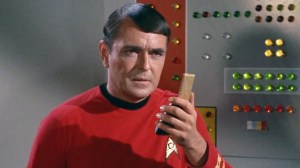The X-Men turn 60 in 2023, and Marvel never misses an opportunity to celebrate. Thus, The Original X-Men #1 is here to revisit the X-Men who appeared in X-Men #1. Marvel’s fascination with the original five X-Men—Cyclops, Marvel Girl, Beast, Iceman, and Angel—remains curious. X-Men was the one series during Marvel’s early era that even the seemingly unbeatable pairing of Jack Kirby and Stan Lee couldn’t turn into instant success. Despite that, there have been many attempts to revisit the X-Men as they were before Giant-Size X-Men #1 made them into what they are now. The most successful of these include Jeff Parker and Roger Cruz’s X-Men: First Class, which keyed in on the teen adventure angle, and X-Men: Season One by Dennis Hopeless and Jamie McKelvie, which brought nuance to elements of those early comics previously taken for granted. Brian Michael Bendis then made the original five X-Men the centerpiece of his years-long run on the X-Men books by dragging into the present day of the Marvel universe.
Videos by ComicBook.com
What more can readers get from another take on Marvel’s first five mutants after 60 years and all those previous returns? Based on The Original X-Men #1, not much.
The Original X-Men #1, written by Christos Gage, is built on the same hook as All-New X-Men. The X-Men’s first class is plucked from their home era and sent on a mission to talk some sense into their future selves. The difference here is The Original X-Men #1 also jumps aboard the multiverse bandwagon. A version of the Phoenix from another timeline is the one grabbing the first X-Men out of their timeline, and she’s tossing them into yet another timeline (not hers) to face a version of Jean/Phoenix who has gone mad with power and taken over, with the other four X-Men backing her up. It’s a setup convoluted enough that the Phoenix has to spend the first eight pages of the issue explaining it to the protagonists.
The Original X-Men #1 features the artwork of Greg Land, who is precisely the wrong artist to visually capture either the youthfulness of the story’s main characters or the style of Silver Age Marvel Comics, and it feels like little effort was made. The first words of The Original X-Men #1 tell readers they’re in “A Simpler Time,” yet the scenes that take place then have the same overly contoured façade as the rest of the book. There’s no visual distinction made to make readers feel the difference in time or reality or the characters’ ages. Despite teen Jean making a tawdry remark about Phoenix’s age, they’re both drawn like the same Maxim model posing for a photoshoot.
There’s little beneath the issue’s offputting surface. It takes 20 pages to reach anything approaching a thematic purpose for this book—that in our younger selves’ eyes, most of us probably look like compromised sellouts—and then it’s all rushed lip service that doesn’t resonate with the issue’s plot. The multiverse angle further mutes any impact the story might have. Sure, this Jean is evil, but the X-Men were sent on this mission by a saintly Jean who chose to coexist with the Phoenix and turned her timeline into a paradise. The thing about an infinite multiverse is that everything happens eventually, which makes Jean’s astonishment at the depths of her depravity in one timeline feel unimpactful in the grand scheme of things.
The Original X-Men #1 is an ill-conceived celebration of an era few people particularly enjoyed in the first place, an exercise in dredging up the past despite having nothing to say about it. It doesn’t even make a particularly compelling case for the upcoming series it’s a stealth prelude to. Anyone who feels compelled to celebrate the original X-Men’s birthday would be better served reading the Roy Thomas/Neal Adams run of the original series or any of the other revival series I’ve mentioned already. The Original X-Men #1 fails to justify its existence.
Published by Marvel Comics
On December 20, 2023
Written by Christos Gage
Art by Greg Land and Jay Leisten
Colors by Frank D’Armata
Letters by Clayton Cowles
Cover by Ryan Stegeman, JP Mayer, and Brad Anderson








